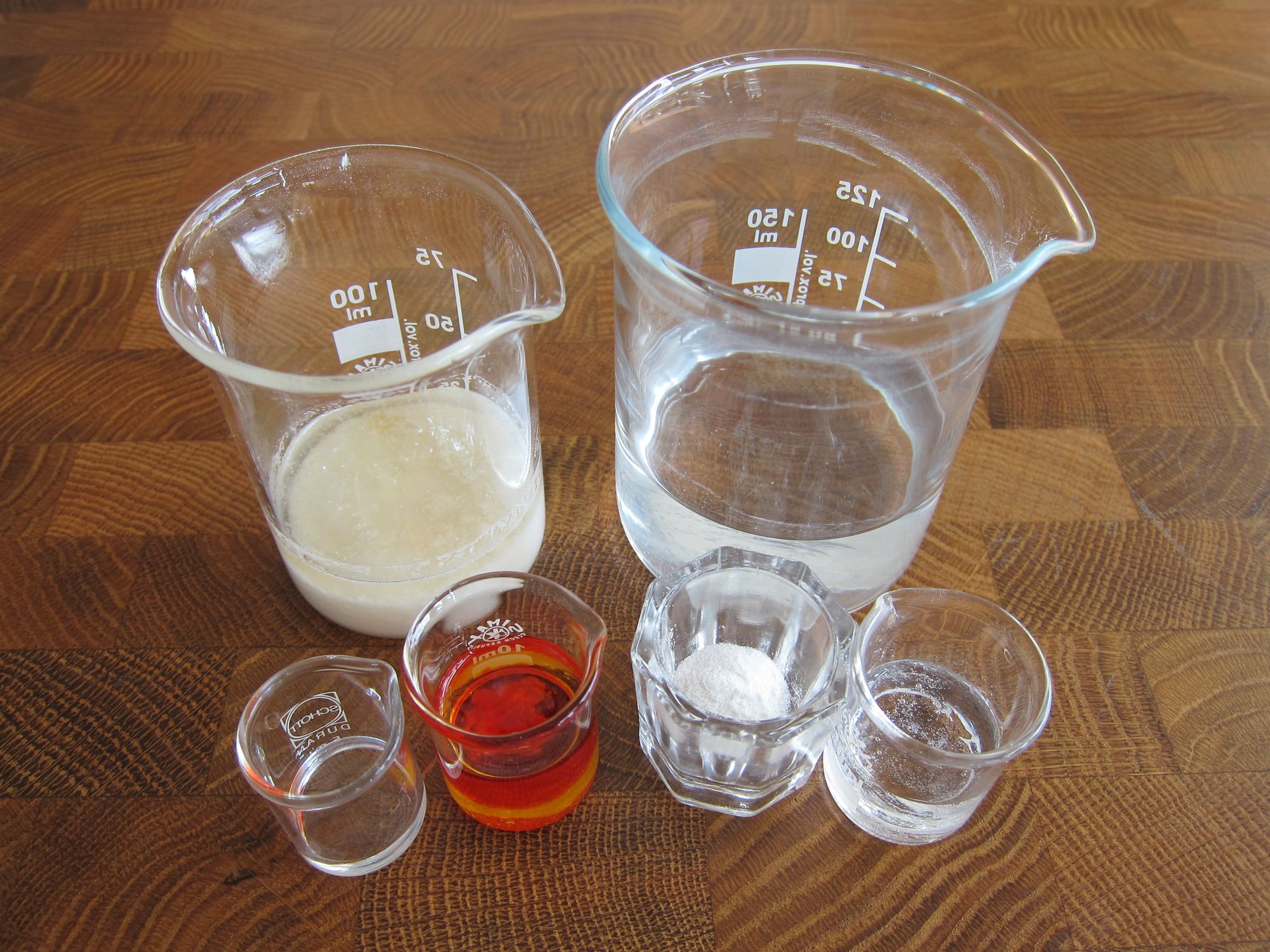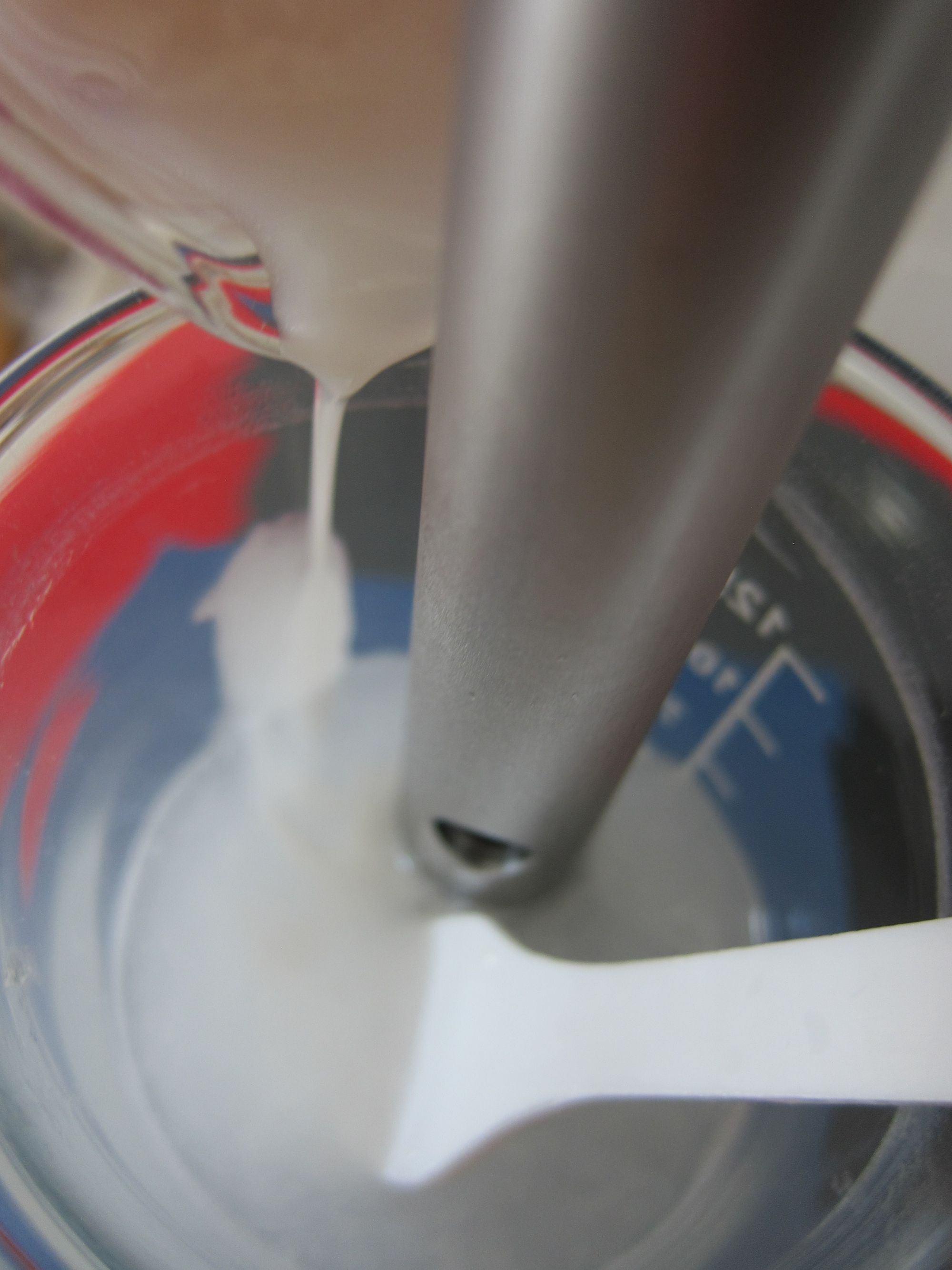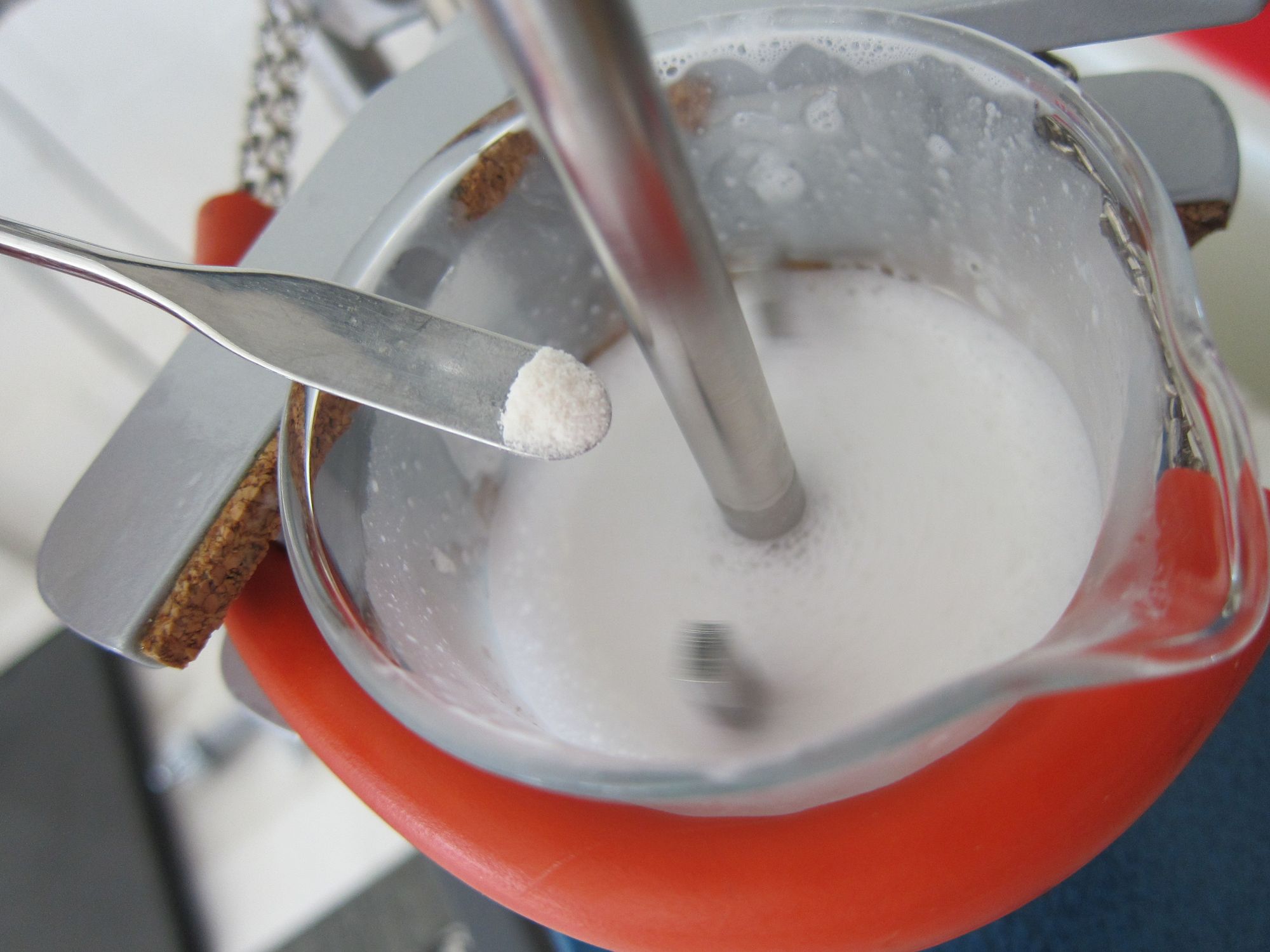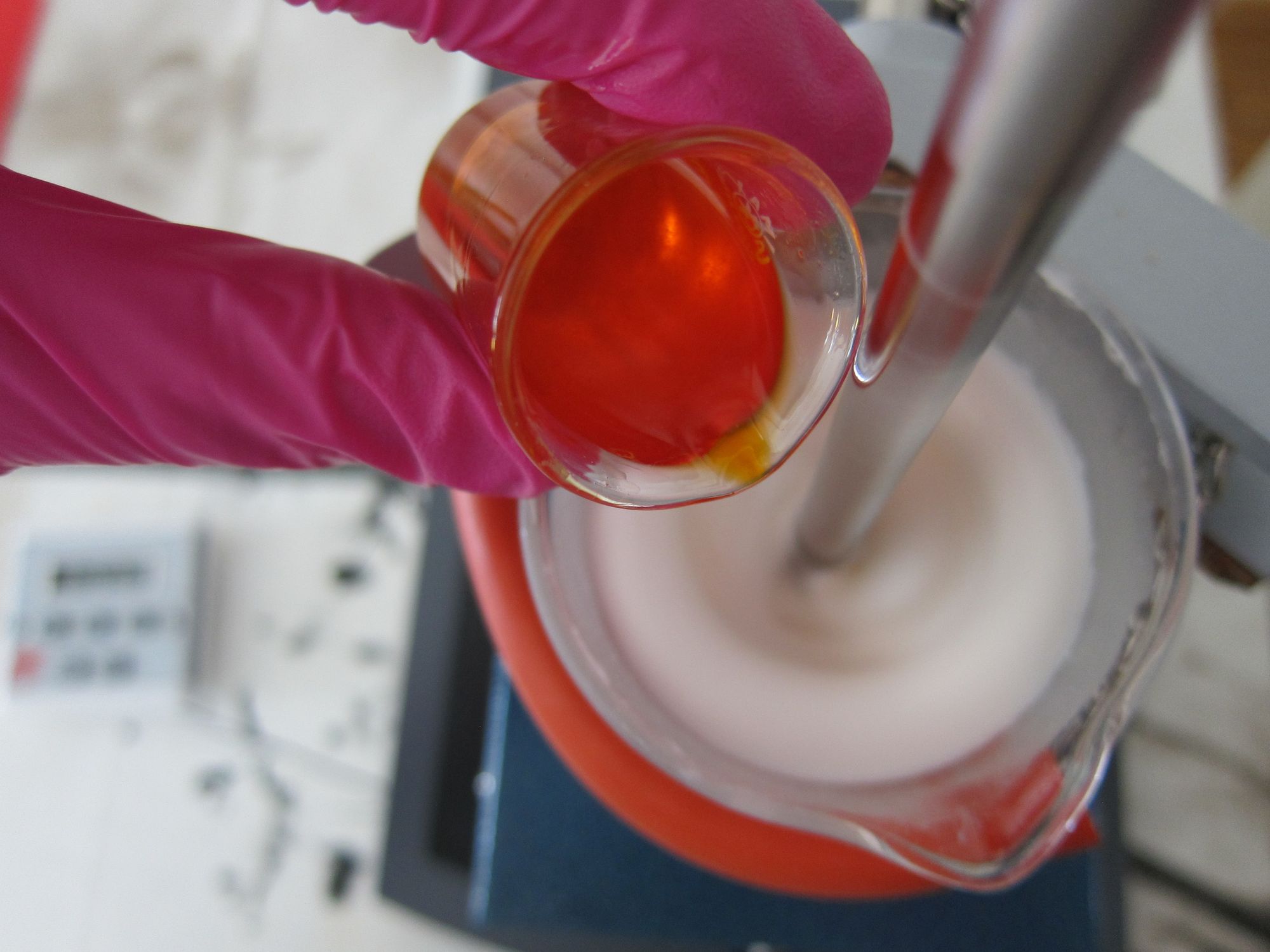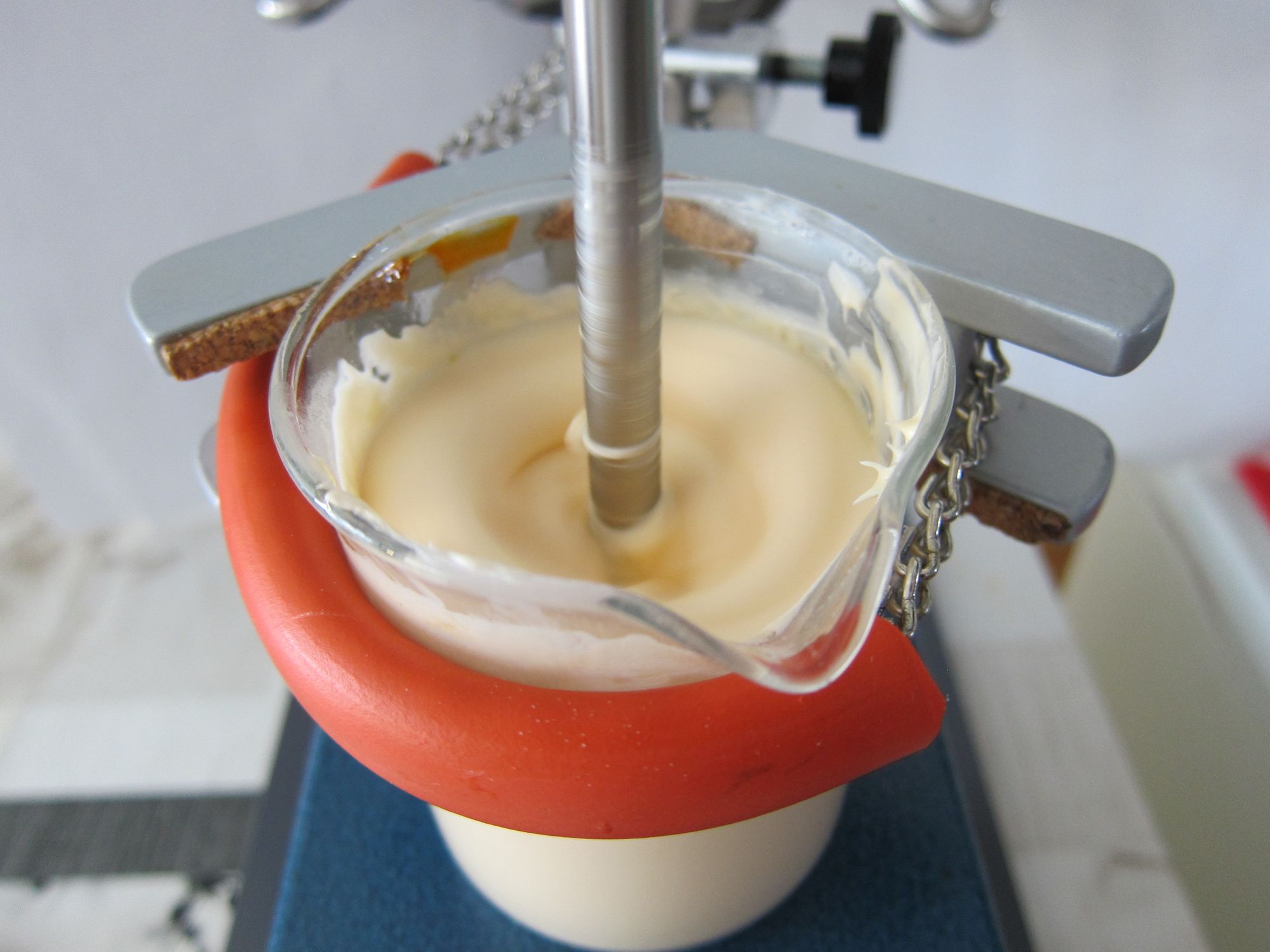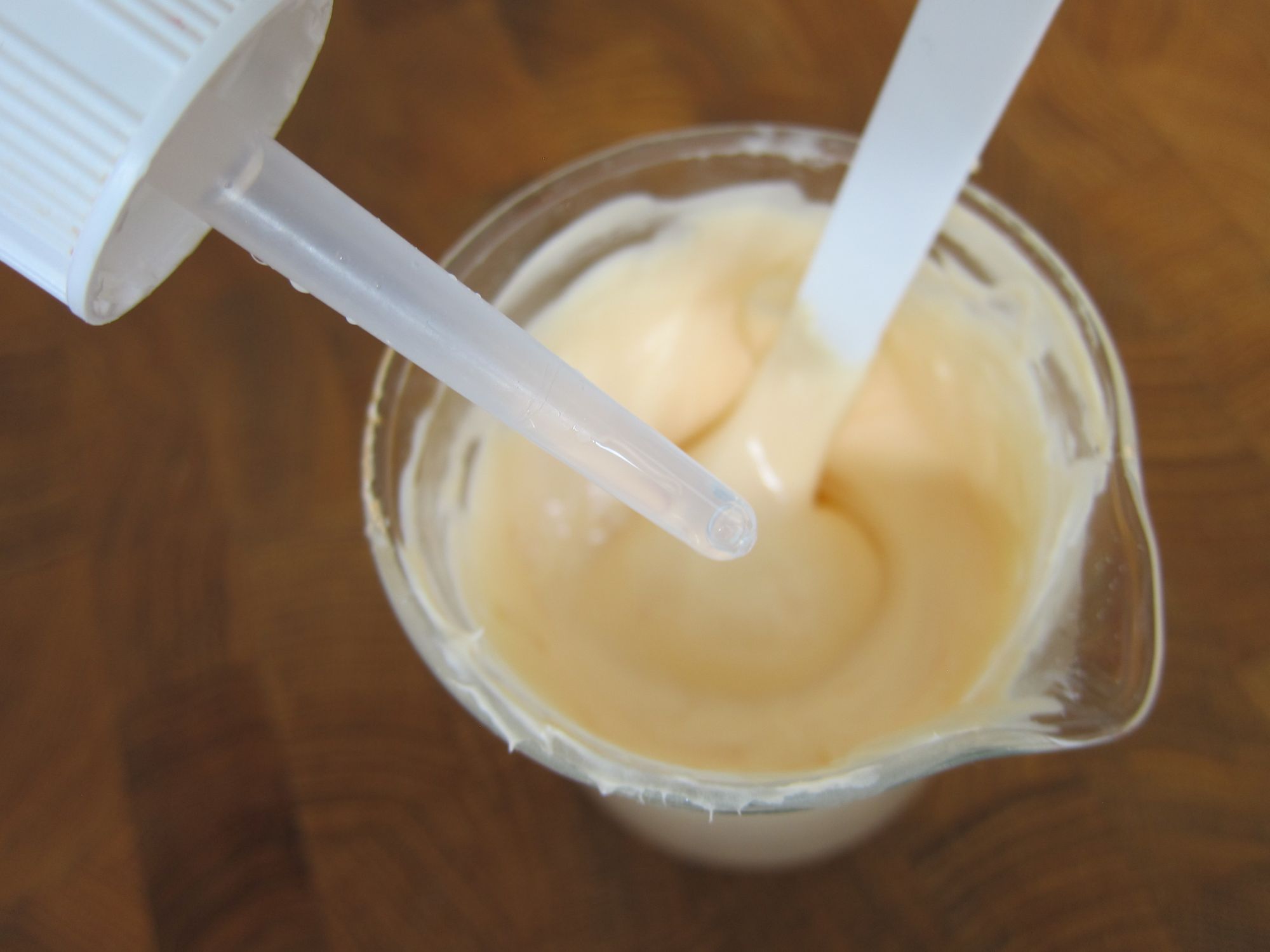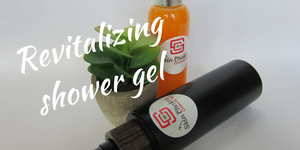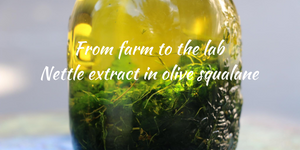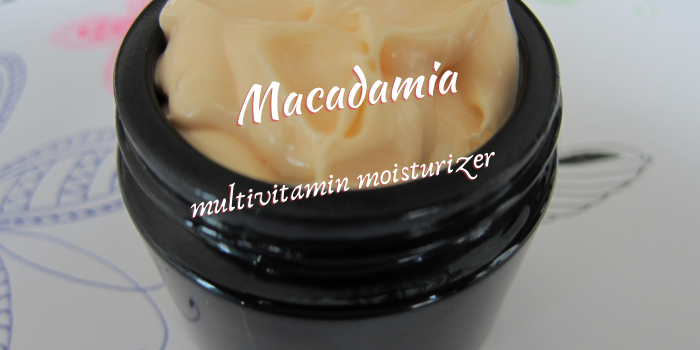
This is another non-KISS emulsion that I couldn't help share with you.
We have mixed oils of different polarities here to get to the optimum skin feel, texture and stability. Adding the rice starch imparts a powdery dry skin feel, increases the viscosity and improves the stability of this emulsion with the anionic emulsifier.
If you have never worked with the rice starch or don't know why the hell we are so obsessed with it go back to this post before proceeding:
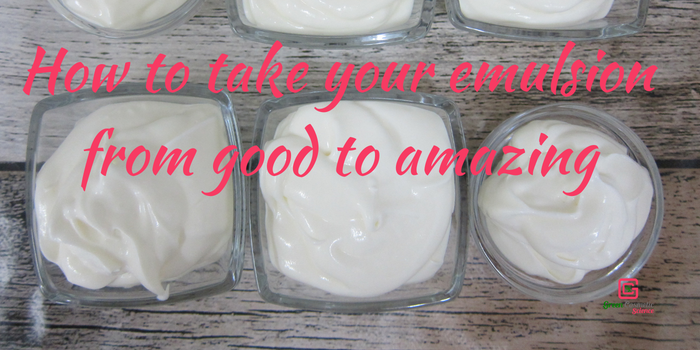
If you are a novice formulator reduce the number oil oils in this formulation and just use the macadamia oil in the oil phase.
The emulsion has a large portion of cool down ingredients and I recommend you reduce the number and the concentration of them the first couple of times you make this formulation. When you are confident and happy with the results come back to this rather complex formulation.
Apart from the long list of the ingredients and the number of phases, the procedure is rather simple and straightforward but you still need some experience in emulsion making to master this formulation.
This formulation is buffered. GSC needs a buffering system to avoid pH drift over time which will rapidly happen if you do not buffer the formulation. If you still are confused about the buffers and which formulations need a buffer system and how you can buffer a formulation we have a digital file for you which answers all your questions. This has been a module in our flagship course: measure and adjust the pH like a cosmetic chemist that we are now selling as a standalone file
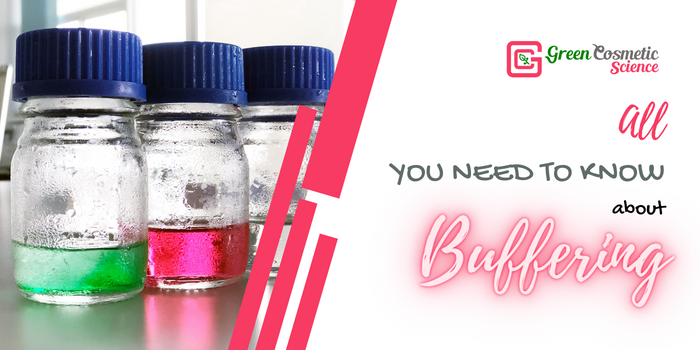
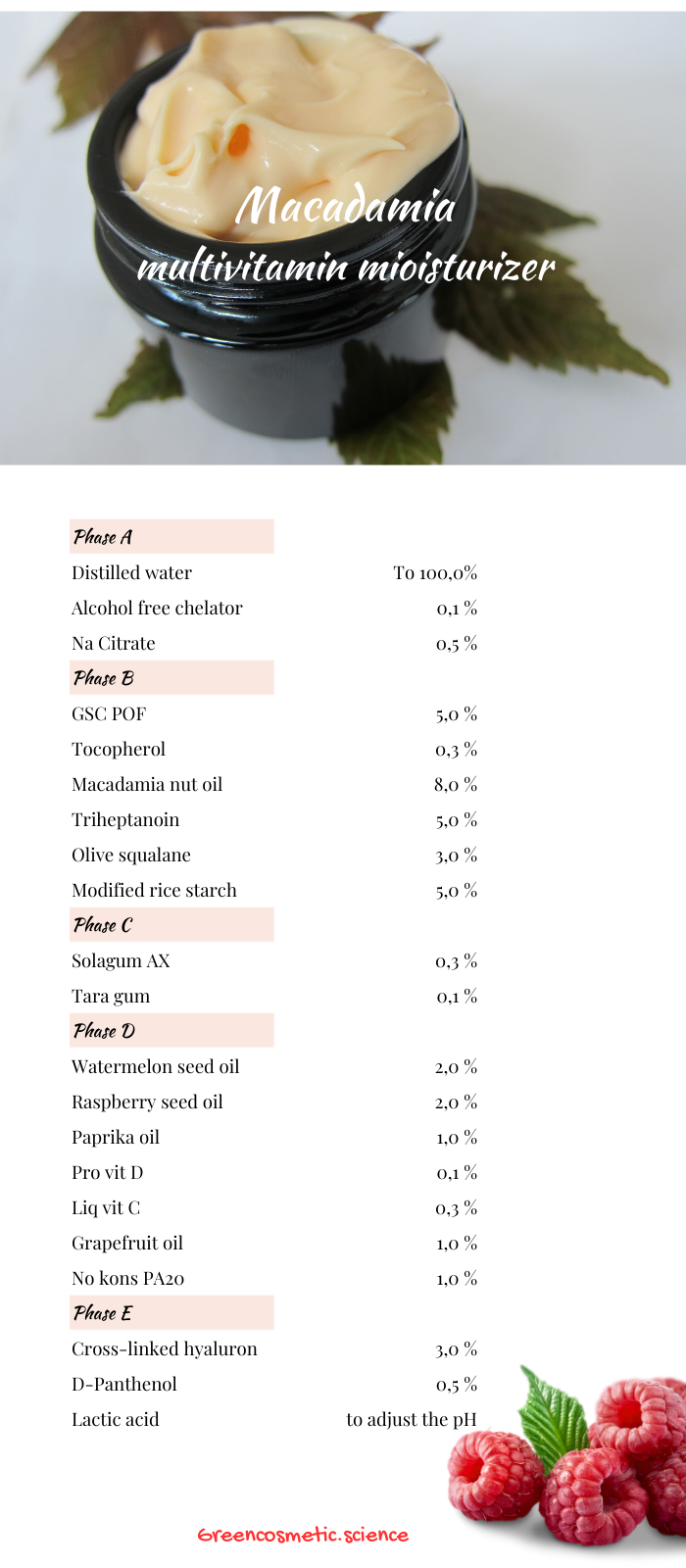
Procedure:
1- Blend phase A and B in separate heat-proof beakers
2- Heat phase A and B in a water bath between 80-85 C
3- Emulsify the oil phase in the water phase
4- Disperse the gum blend in the still hot emulsion
5- Start cooling down while stirring
6- When the temperature reaches under 40 C add the sensitive phases (Phase D)
7- Add the panthenol and hyaluron in phase E but do not add the lactic acid yet
8- When the emulsion reaches the room temperature prepare a 10% dilution and measure the pH. In our case it was 6,09.
9- Reduce the pH by adding lactic acid. If you are making this formulation for the first time add the lactic acid gradually and measure the pH in between.
10- Prepare another dilution of the emulsion and measure the pH. In our case it was 5,38. We are aiming for a pH between 4,9-5,5.
11- Take the stability and micro kit samples and fill the rest in a suitable container
